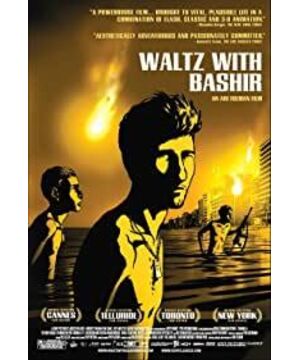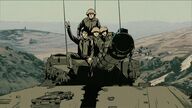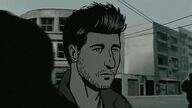All I can say when I watch the film except before the last thirty seconds is that it gives a great sense of alienation to someone like me who doesn't have a deep understanding of the war in Lebanon. The fictional and unreal feeling about animation that was solidified in my cognition made me not have some heartfelt shock and disgust for the war recorded in this film. On the contrary, I regarded it as a some kind of imaginary body, some kind of story that takes place in an abstract, distant place opposite our society.
Yep, that's how I feel about it. Until the last thirty seconds, a recording shot in the war, which was connected to the front, directly hit me in the sense of detachment, pulling me from the imaginary enclave to the solid ground.
In an instant, all the false senses from animation before became a reality. The entire documentary, which may be the lack of real recording footage, leads to the war that cannot be expressed in a real and reproduced form, but the memories and the past expressed in the way of animation, when the animation finally converges with reality. , all turned into a deeply imprinted reality, the corpse shot of the little girl who linked the two dimensional latitudes, shattered all the floating feeling belonging to the anime, and closely linked it with the reality.
This is a proven documentary method and worth trying
Of course, it can be a way to make a documentary at a time when we can't choose and have real, historical footage and images from the past.
This documentary is not a qualified documentary, but it does provide a new way of thinking and ideas for the development of documentary.
And this is enough.
View more about Waltz with Bashir reviews








